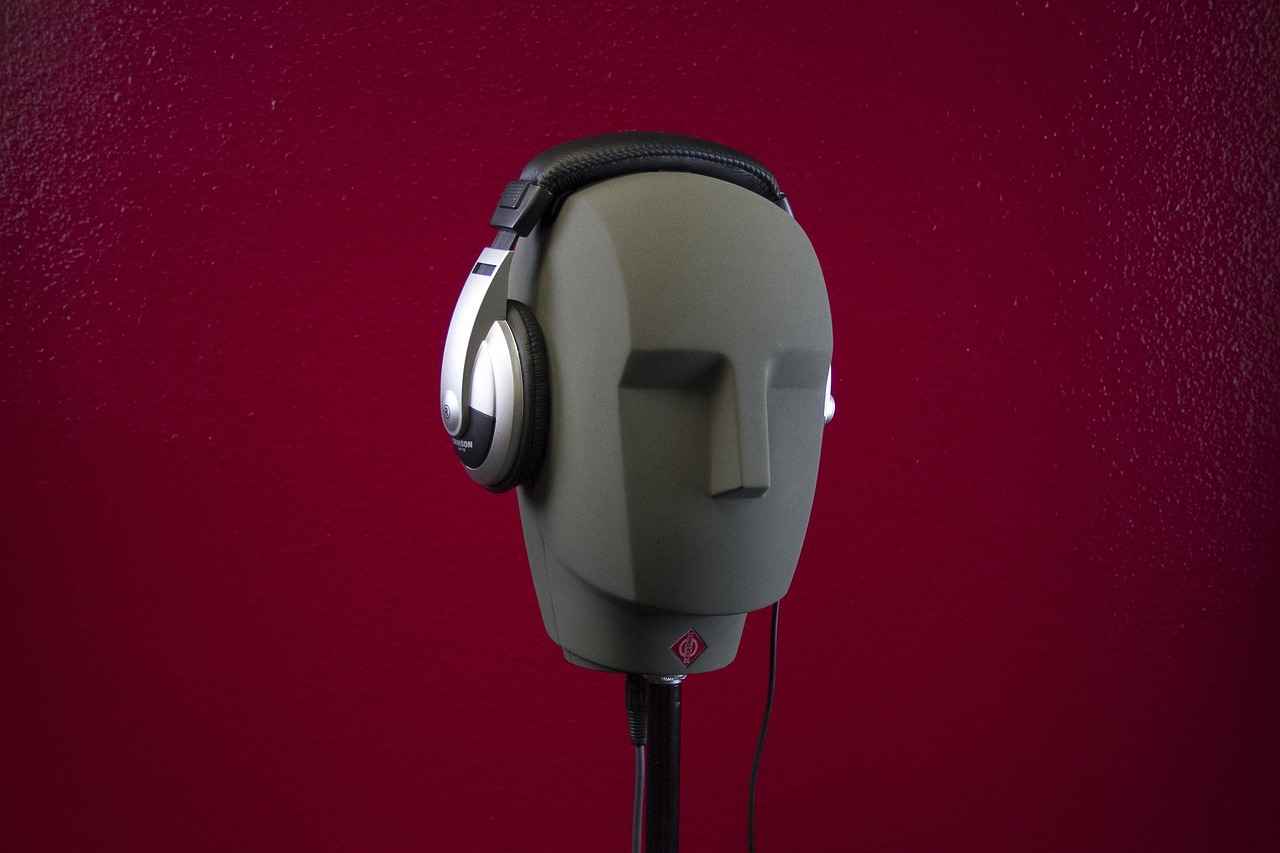This article explores effective methods for identifying asbestos in popcorn ceilings, providing crucial insights into safety measures and testing procedures to ensure a healthy living environment.
Popcorn ceilings, also known as acoustic ceilings, gained popularity in the mid-20th century due to their ability to hide imperfections and absorb sound. These textured ceilings are created by spraying a mixture of styrofoam, paint, and other materials onto the ceiling surface. While they were once favored for their aesthetic appeal, many homeowners today are concerned about their potential health risks, particularly the presence of asbestos.
Asbestos is a naturally occurring mineral that was widely used in building materials for its fire-resistant properties. However, exposure to asbestos fibers can lead to serious health issues, including asbestosis, lung cancer, and mesothelioma. The risk increases significantly when asbestos-containing materials are disturbed, releasing fibers into the air. Understanding these dangers underscores the importance of testing for asbestos in popcorn ceilings, especially in homes built before the 1980s.
The likelihood of asbestos presence in popcorn ceilings is often correlated with their age. Most popcorn ceilings installed before the 1980s are more likely to contain asbestos. Homeowners can identify the age of their ceilings by checking building permits, consulting with previous owners, or looking for specific construction styles. Knowing the age can inform decisions regarding testing and remediation.
Conducting a visual inspection is a crucial first step in identifying potential asbestos in popcorn ceilings. Homeowners should look for signs such as texture, color, and any visible damage. If the ceiling appears to be crumbling, cracked, or discolored, these could be indicators of asbestos-containing materials. However, visual inspections alone are not definitive; laboratory testing is necessary for confirmation.
For those who prefer a hands-on approach, DIY testing kits for asbestos detection are available. These kits typically include materials for safely collecting samples from the ceiling. Homeowners should carefully follow the instructions provided, ensuring they wear protective gear during the process. While DIY kits can be convenient, it’s essential to send the samples to a certified laboratory for accurate analysis.
For a more reliable assessment, hiring professional asbestos testing services is recommended. Professionals have the expertise and equipment to safely collect samples and analyze them in certified laboratories. When selecting a service, homeowners should look for qualified experts with experience in asbestos testing. Understanding the process and associated costs can help in making an informed decision.
Familiarity with asbestos regulations is crucial for homeowners. Various laws govern the handling and removal of asbestos to ensure safety. The Environmental Protection Agency (EPA) and the Occupational Safety and Health Administration (OSHA) provide guidelines on managing asbestos-containing materials. Homeowners should be aware of these regulations to ensure compliance and avoid legal issues.
If asbestos is detected in your popcorn ceiling, it’s essential to take appropriate action. Homeowners should consider whether to remove, encapsulate, or leave the asbestos undisturbed, depending on its condition and location. Consulting with a professional can help determine the best course of action to minimize health risks.
If removal is necessary, it’s crucial to do it safely. Homeowners should hire certified asbestos abatement contractors who follow strict safety protocols, including the use of protective gear and proper ventilation. The removal process typically involves sealing off the area, wetting the material to minimize dust, and safely disposing of the asbestos waste.
For homeowners considering a makeover, exploring alternatives to popcorn ceilings can enhance the aesthetic appeal of their homes. Options such as flat ceilings, beadboard, or textured finishes provide modern alternatives that are free from the health risks associated with asbestos. Each option has its benefits, and homeowners should weigh these against their preferences and budget.
If you suspect past exposure to asbestos, ongoing health monitoring is crucial. Regular check-ups with a healthcare professional can help detect any symptoms related to asbestos-related diseases. Homeowners should be vigilant about any respiratory issues or changes in health, as early detection can significantly improve outcomes.
Accessing reliable information and support can aid in managing asbestos concerns. Resources such as the EPA, CDC, and various non-profit organizations provide valuable information on asbestos issues. Homeowners can also find support groups and online platforms dedicated to educating the public about asbestos safety and health risks.

What is a Popcorn Ceiling?
Understanding the characteristics of popcorn ceilings is vital for homeowners looking to renovate or maintain their properties. Popcorn ceilings, also known as acoustic ceilings or cottage cheese ceilings, are textured ceilings that gained immense popularity in the mid-20th century. Their unique texture is created by spraying a mixture of styrofoam, paint, and adhesive onto the ceiling surface, resulting in a bumpy and uneven appearance.
The historical significance of popcorn ceilings is rooted in their practical benefits. Initially, they were introduced as a way to reduce noise and hide imperfections in the ceiling. Homebuilders embraced this style for its affordability and ease of application. During the 1950s to the 1980s, popcorn ceilings became a staple in many residential constructions, especially in single-family homes and apartments.
One of the primary reasons for their popularity was the low maintenance required. The textured surface could easily mask stains and other damages, making it a favored choice for families with children or pets. Additionally, the acoustic properties of popcorn ceilings helped to absorb sound, providing a quieter living environment.
However, while popcorn ceilings have their advantages, they also come with significant drawbacks. One of the most pressing concerns is the potential presence of asbestos, a hazardous material commonly used in building products before its ban in the late 1970s. As a result, homeowners with popcorn ceilings installed before this period should consider having their ceilings tested for asbestos to ensure safety.
In recent years, the trend has shifted away from popcorn ceilings, with many homeowners opting for smoother finishes that are easier to clean and maintain. The removal process of popcorn ceilings can be labor-intensive and may require professional assistance, especially if asbestos is suspected. Homeowners are encouraged to weigh the pros and cons of keeping or removing popcorn ceilings based on their individual circumstances.
In summary, popcorn ceilings are a distinctive feature of many homes, with a rich history and practical benefits. However, understanding their characteristics, potential risks, and modern alternatives is crucial for homeowners looking to make informed decisions about their properties.

Why is Asbestos a Concern?
Asbestos is a naturally occurring mineral that was widely used in construction and manufacturing due to its fire-resistant properties and durability. However, its use has been significantly restricted due to the serious health risks associated with exposure. Understanding the dangers of asbestos is crucial for homeowners, especially those with older properties that may contain materials like popcorn ceilings.
Exposure to asbestos fibers can lead to a range of severe health issues. The most concerning diseases linked to asbestos include:
- Asbestosis: This chronic lung disease is caused by inhaling asbestos fibers, leading to lung scarring and breathing difficulties.
- Mesothelioma: A rare and aggressive cancer that primarily affects the lining of the lungs and abdomen. It is almost exclusively caused by asbestos exposure.
- Lung Cancer: Asbestos exposure significantly increases the risk of developing lung cancer, particularly among smokers.
- Other Cancers: Studies have also linked asbestos exposure to cancers of the larynx, ovaries, and gastrointestinal tract.
The latency period for these diseases can be quite long, often taking 20 to 50 years to manifest after exposure. This delayed onset makes it challenging for individuals to connect their health issues to past asbestos exposure, underscoring the importance of proactive testing and monitoring.
Given these risks, it is essential to test for the presence of asbestos in homes, particularly in materials like popcorn ceilings that were commonly installed before the 1980s. Homeowners should be aware that:
- Asbestos fibers can be released into the air when disturbed, increasing the risk of inhalation.
- Even small amounts of asbestos can pose health risks, making it crucial to avoid DIY removal without proper precautions.
- Professional testing and remediation services can help safely identify and address asbestos concerns.
Additionally, understanding local regulations regarding asbestos is vital. Many regions have specific guidelines for testing, handling, and disposing of asbestos-containing materials. Compliance with these regulations not only ensures safety but also protects homeowners from legal liabilities.
In conclusion, the dangers associated with asbestos exposure are significant and multifaceted. From serious health risks to regulatory implications, homeowners must prioritize testing for asbestos in their properties. By doing so, they can take informed steps to protect their health and ensure a safe living environment.

Identifying the Age of Your Popcorn Ceiling
is a crucial step in assessing the potential presence of asbestos. Understanding the timeline of when your popcorn ceiling was installed can provide significant insights into the likelihood of it containing this hazardous material. In this section, we will explore how to determine the age of your popcorn ceiling and what implications this has for asbestos testing.
Popcorn ceilings, also known as acoustic ceilings, gained popularity in the United States from the 1950s to the late 1980s. These textured ceilings were favored for their ability to hide imperfections and reduce noise. If your home was built or renovated during this period, it’s essential to consider the possibility of asbestos in the ceiling material.
- Check the Year of Construction: The first step in identifying the age of your popcorn ceiling is to check the year your home was built. Homes constructed before the 1980s are more likely to have ceilings that contain asbestos.
- Renovation Records: If your home has undergone renovations, review any records or permits that may indicate when the popcorn ceiling was installed. This can provide clarity on whether the ceiling is original or a later addition.
- Material Analysis: If you have access to construction materials or remnants from the ceiling, examining these can help determine their age. Older materials may have different compositions compared to those used in more recent installations.
Once you have an estimate of the age of your popcorn ceiling, it is vital to understand the implications regarding asbestos. The use of asbestos in popcorn ceilings was widespread until it was banned in the late 1970s due to health risks. If your ceiling was installed before this ban, there is a higher likelihood that it contains asbestos.
To ensure safety, consider the following options for further assessment:
- Visual Inspection: Look for signs of wear and damage. If the ceiling is crumbling or deteriorating, it may release asbestos fibers into the air.
- Asbestos Testing: If you suspect your popcorn ceiling may contain asbestos, it is advisable to conduct testing. You can use DIY testing kits or hire professionals for accurate results.
In conclusion, identifying the age of your popcorn ceiling is an essential step in assessing the risk of asbestos exposure. By understanding when your ceiling was installed and taking the necessary precautions, you can ensure a safer living environment. Always prioritize safety and consider professional assistance when dealing with potential asbestos-containing materials.

Visual Inspection for Asbestos Indicators
Conducting a visual inspection of your popcorn ceiling is a crucial first step in determining the potential presence of asbestos. This inspection can provide initial clues that may indicate whether your ceiling material contains this hazardous substance. Here, we will explore the key aspects to look for during your inspection, including texture, color, and signs of damage or deterioration.
- Texture: Popcorn ceilings are known for their distinctive textured finish. When inspecting, feel the surface; if it feels rough or has a bumpy texture, it may be a traditional popcorn ceiling. However, if it is smooth or has a different texture, it may have been altered or replaced.
- Color: The color of the ceiling can also provide clues. Original popcorn ceilings are often white or off-white. If you notice discoloration, such as yellowing or brown spots, it may indicate moisture damage, which can also affect the integrity of the material.
- Signs of Damage: Look for any signs of damage, such as cracks, peeling, or flaking. These issues can expose the underlying material, increasing the risk of asbestos fibers becoming airborne. If you see any damaged areas, it is crucial to avoid disturbing them further.
- Deterioration: Over time, popcorn ceilings may deteriorate due to age, water damage, or other factors. Pay close attention to any areas that appear to be crumbling or sagging, as this can indicate a compromised ceiling that may release asbestos fibers.
Additionally, the age of your popcorn ceiling plays a significant role in the likelihood of asbestos presence. Ceilings installed before the 1980s are more likely to contain asbestos. If your home was built during this time, it is essential to conduct a thorough visual inspection and consider professional testing.
If you suspect that your popcorn ceiling may contain asbestos based on your visual inspection, it is advisable to take immediate action. Avoid disturbing the ceiling, as this can release harmful fibers into the air. Instead, consider hiring a professional for further assessment and testing.
In summary, a detailed visual inspection can provide valuable insights into the potential presence of asbestos in your popcorn ceiling. By examining the texture, color, and any signs of damage or deterioration, you can take the necessary precautions to protect your health and safety. If you find indicators that raise concerns, seeking professional help is the safest course of action.

DIY Testing Kits for Asbestos Detection
Asbestos is a dangerous material that can pose significant health risks if disturbed. For homeowners concerned about the presence of asbestos in their popcorn ceilings, DIY testing kits provide a practical and accessible solution. These kits allow individuals to test for asbestos without needing to hire a professional, making them an appealing option for many.
There are several types of DIY testing kits available on the market, each designed to cater to different needs and preferences. Most kits typically include a sample collection container, detailed instructions, and a pre-paid shipping label to send samples to a laboratory for analysis. Some popular types of kits include:
- Bulk Sampling Kits: Ideal for collecting larger samples from textured surfaces.
- Air Sampling Kits: Used to assess airborne asbestos fibers, particularly in spaces where disturbance may have occurred.
- Surface Sampling Kits: Designed to test specific areas for contamination.
When using a DIY testing kit, it’s essential to follow the instructions carefully to ensure accurate results. Here are some key steps to keep in mind:
- Preparation: Before collecting samples, ensure you wear appropriate protective gear, including gloves and a mask, to avoid inhaling any asbestos fibers.
- Sample Collection: Use the provided tools to carefully scrape or cut a small section of the popcorn ceiling. Place the sample in the container as instructed.
- Shipping: Seal the container securely and use the pre-paid label to send it to the designated lab.
After sending the sample, results are typically available within a week. The accuracy of these DIY kits can vary, but many reputable brands offer reliable testing services. It’s crucial to choose a kit that is EPA-approved to ensure the results are trustworthy. Additionally, while DIY kits can provide a preliminary assessment, they may not be as comprehensive as professional testing.
In summary, DIY testing kits are a convenient option for homeowners looking to identify asbestos in their popcorn ceilings. By following proper procedures and selecting a reliable kit, individuals can gain valuable insights into the safety of their living environments. However, in cases where asbestos is detected, it is advisable to consult with a professional for further evaluation and remediation.

Professional Asbestos Testing Services
When dealing with potential asbestos exposure, particularly in older homes with popcorn ceilings, hiring professionals for asbestos testing is crucial. This ensures not only safety but also the reliability of the results obtained. Understanding what to expect from a professional service, including the process, costs, and how to select a qualified expert, can significantly impact your approach to managing asbestos concerns.
What to Expect from a Professional Asbestos Testing Service
When you hire a professional asbestos testing service, the process typically begins with an initial consultation. During this phase, the experts will assess your property and discuss any specific concerns you may have. Following this, they will conduct a thorough inspection, which includes taking samples from suspect areas, such as your popcorn ceiling. These samples are then sent to a certified laboratory for analysis. The testing results can take anywhere from a few days to a couple of weeks, depending on the lab’s workload.
Understanding the Costs Involved
The cost of professional asbestos testing can vary widely based on several factors, including the size of your home, the number of samples taken, and the specific service provider. On average, homeowners can expect to pay between $200 to $800 for comprehensive testing. While this might seem steep, it’s essential to consider the potential health risks associated with asbestos exposure. Investing in professional testing can save you from costly remediation efforts and health-related expenses in the future.
How to Select a Qualified Asbestos Testing Expert
Choosing the right professional for asbestos testing is critical. Here are some key factors to consider:
- Certification and Licensing: Ensure the company is certified and licensed to perform asbestos testing in your area. Look for affiliations with recognized organizations.
- Experience: Opt for a company with a proven track record. Experienced professionals are more likely to provide accurate assessments.
- Reputation: Check online reviews and ask for references. A reputable service provider will have positive feedback from previous clients.
- Transparency: A qualified expert should be open about their testing methods, costs, and what the testing process entails.
Why Professional Testing is Essential
While DIY asbestos testing kits are available, they often lack the precision and reliability of professional services. Professionals have access to advanced equipment and techniques that can detect even minute traces of asbestos. Additionally, they are trained to handle asbestos safely, minimizing the risk of exposure during the testing process.
In conclusion, hiring a professional asbestos testing service is an investment in your health and safety. By understanding the process, costs, and how to choose the right expert, you can navigate the complexities of asbestos testing with confidence, ensuring a safer living environment for you and your family.

Understanding Asbestos Regulations and Guidelines
As a homeowner, being informed about asbestos regulations is not just beneficial but essential. Asbestos, a naturally occurring mineral, was commonly used in building materials due to its heat resistance and durability. However, its hazardous nature has led to strict regulations regarding its handling and removal. This section aims to provide an overview of the critical laws, guidelines, and best practices for managing asbestos safely.
In the United States, the Environmental Protection Agency (EPA) oversees regulations related to asbestos. The EPA’s Asbestos Program aims to protect public health by regulating the use and disposal of asbestos-containing materials (ACMs). Homeowners must be aware that any renovation or demolition activities that may disturb ACMs are subject to specific regulations. These regulations ensure that asbestos is handled safely to prevent exposure.
One key regulation is the Asbestos Hazard Emergency Response Act (AHERA), which requires schools to inspect for asbestos and develop management plans. Although this act primarily targets educational institutions, it highlights the importance of having a plan for managing asbestos in any property. Homeowners should consider similar proactive measures in their own homes.
Moreover, the Occupational Safety and Health Administration (OSHA) has established standards to protect workers from asbestos exposure during construction and demolition activities. These standards mandate that employers provide training and protective equipment for workers handling asbestos. Homeowners who hire contractors for renovations should ensure that these professionals comply with OSHA regulations to minimize risk.
In addition to federal regulations, many states have their own laws governing asbestos management. These state-specific regulations may include licensing requirements for asbestos abatement contractors and additional safety protocols. Homeowners should familiarize themselves with their local laws to ensure compliance and protect their health.
| Regulation | Description |
|---|---|
| EPA Asbestos Program | Regulates the use and disposal of asbestos-containing materials. |
| AHERA | Requires schools to inspect for asbestos and create management plans. |
| OSHA Standards | Establishes safety protocols for workers handling asbestos. |
Homeowners should also be aware of the importance of proper asbestos testing and removal. If you suspect the presence of asbestos in your home, it is vital to engage a licensed professional for testing. This step is crucial not only for compliance with regulations but also for ensuring the safety of all occupants. Remember, disturbing asbestos without proper precautions can lead to serious health risks.
In summary, understanding and adhering to asbestos regulations and guidelines is crucial for homeowners. By staying informed and proactive, you can ensure a safer living environment for you and your family while avoiding potential legal issues related to improper asbestos management.

What to Do If Asbestos is Detected
Discovering asbestos in your popcorn ceiling can be alarming. The presence of this hazardous material necessitates immediate action to ensure the safety of your home and its occupants. Here are the appropriate steps you should take if you suspect or confirm the presence of asbestos in your popcorn ceiling.
- Do Not Panic: It’s essential to remain calm. Asbestos poses health risks primarily when disturbed, releasing fibers into the air. If the ceiling is intact and undamaged, the risk of exposure is significantly lower.
- Assess the Condition: Carefully inspect the ceiling for any signs of damage, such as cracks, peeling, or flaking. If the ceiling appears stable, it may be safer to leave it undisturbed.
- Consider Encapsulation: If the popcorn ceiling is in good condition, encapsulation is a viable option. This involves applying a sealant that binds asbestos fibers, preventing them from becoming airborne. Encapsulation can be a cost-effective solution that minimizes risk without the need for complete removal.
- Professional Testing: If you haven’t already, consider hiring a certified asbestos professional to conduct thorough testing. They can provide accurate results and advice tailored to your specific situation. Testing will confirm whether asbestos is present and in what quantity.
- Evaluate Removal Options: If asbestos is confirmed and the ceiling is damaged, removal may be necessary. This process should always be conducted by licensed professionals trained in asbestos abatement. They will follow safety protocols to minimize exposure risk during removal.
- Inform Occupants: If you live in a multi-family dwelling or are renting, inform other residents or your landlord about the potential asbestos hazard. Transparency is crucial for ensuring everyone’s safety.
- Follow Local Regulations: Familiarize yourself with local laws and regulations regarding asbestos handling and removal. Many areas have specific guidelines that must be followed to ensure safety and compliance.
- Monitor Health: If you suspect past exposure, consider regular health check-ups. Consult with a healthcare professional about any symptoms you may experience, as early detection of asbestos-related diseases is vital.
In summary, while discovering asbestos in your popcorn ceiling can be concerning, taking the right steps can help manage the situation effectively. Whether you choose to encapsulate, leave it undisturbed, or remove it entirely, prioritizing safety and following professional guidance is essential. Always consult with experts to ensure that your decisions align with best practices for asbestos management.

Safe Removal of Popcorn Ceilings
Removing popcorn ceilings that may contain asbestos is a task that requires careful planning and execution. If you suspect that your ceiling has asbestos, it is crucial to prioritize safety above all else. This section will cover the necessary methods and precautions for safely removing popcorn ceilings, ensuring that you protect yourself and your home during the process.
Understanding the RisksAsbestos is a fibrous mineral that was widely used in construction materials, including popcorn ceilings, due to its fire-resistant properties. However, when disturbed, asbestos fibers can become airborne and pose serious health risks, including lung diseases and cancer. Therefore, before initiating any removal process, it is essential to confirm the presence of asbestos through proper testing.
Protective Gear is EssentialWhen preparing for the removal of popcorn ceilings, wearing the right protective gear is non-negotiable. The following items are recommended:
- Respirator Mask: A high-efficiency particulate air (HEPA) mask will filter out asbestos fibers.
- Protective Clothing: Disposable coveralls, gloves, and shoe covers should be worn to avoid contamination.
- Goggles: Safety goggles will protect your eyes from dust and debris.
Ventilation RequirementsProper ventilation is crucial during the removal process. Ensure that the area is well-ventilated to minimize the concentration of airborne asbestos fibers. Open windows and use fans to create airflow, directing any potential contaminants outside. Additionally, sealing off the work area with plastic sheeting can help contain dust and fibers, preventing them from spreading to other parts of the home.
Removal MethodsThere are two primary methods for removing popcorn ceilings: wet removal and dry removal. Wet removal involves spraying the ceiling with water to dampen the material before scraping it off. This method helps to minimize dust and fiber release. On the other hand, dry removal should be avoided if asbestos is confirmed, as it generates more dust and can increase the risk of exposure.
Disposal of Asbestos-Containing MaterialsOnce the popcorn ceiling has been removed, proper disposal of the material is critical. Asbestos waste must be handled and disposed of according to local regulations. Typically, this involves sealing the material in leak-proof bags and labeling them as hazardous waste. It is advisable to contact local waste management facilities for specific disposal guidelines.
Consider Professional HelpGiven the health risks associated with asbestos, hiring a licensed asbestos abatement professional is often the safest choice. These experts are trained to handle asbestos safely and can ensure that the removal process adheres to all regulatory requirements. They can also provide peace of mind, knowing that the job is done correctly and safely.
In summary, the safe removal of popcorn ceilings containing asbestos requires a thorough understanding of the risks, appropriate protective measures, and adherence to safety protocols. By following these guidelines, homeowners can mitigate health risks and ensure a safer living environment.

Alternatives to Popcorn Ceilings
For homeowners contemplating a ceiling makeover, exploring alternatives to popcorn ceilings can significantly enhance both aesthetics and property value. Popcorn ceilings, once a popular choice for their ability to hide imperfections, have fallen out of favor due to their outdated appearance and potential health risks associated with asbestos. Below, we discuss various ceiling options, their benefits, and how they stack up against traditional popcorn ceilings.
- Smooth Ceilings: One of the most popular alternatives, smooth ceilings provide a sleek and modern look. They are easy to clean and maintain, making them a practical choice for contemporary homes. Unlike popcorn ceilings, smooth finishes do not trap dust and allergens, promoting better air quality.
- Textured Ceilings: For those who still desire some character, textured ceilings offer a variety of styles, such as knockdown or slap brush finishes. These options can add visual interest without the heaviness of popcorn. Textured ceilings can also help in sound absorption, making them suitable for multi-story homes.
- Wood Paneling: Adding wood panels can create a warm and inviting atmosphere. Available in various finishes and styles, wood ceilings are durable and can be stained or painted to match your decor. They also provide excellent insulation, enhancing energy efficiency.
- Ceiling Tiles: Decorative ceiling tiles are another viable option. These tiles come in numerous designs, colors, and materials, allowing for a customized look. They are relatively easy to install and can be used to cover existing popcorn ceilings if removal is not feasible.
- Beadboard Ceilings: Beadboard offers a classic, cottage-like feel that can elevate the charm of any room. This option is particularly popular in kitchens and bathrooms, as it adds texture while being moisture-resistant when properly treated.
- Drywall Ceilings: For a completely new ceiling, installing drywall is a solid choice. It provides a clean slate and can be finished in various ways, including painting or adding texture. Drywall ceilings are versatile and can be tailored to fit any style.
- Acoustic Panels: If noise reduction is a priority, consider acoustic panels. These panels are designed to absorb sound, making them ideal for home theaters or busy family areas. They come in various designs and can be painted to match your decor.
When comparing these alternatives to popcorn ceilings, it’s essential to consider factors such as installation costs, maintenance, and aesthetic preferences. While popcorn ceilings may have been a cost-effective solution in the past, many homeowners now prioritize modern looks and healthier living environments.
In conclusion, transitioning away from popcorn ceilings opens up a world of design possibilities. By selecting an alternative that aligns with your style and functional needs, you can create a more inviting and contemporary space that enhances your home’s overall appeal.

Long-Term Health Monitoring After Asbestos Exposure
If you have a history of exposure to asbestos, it is imperative to prioritize your health through **ongoing monitoring**. Asbestos exposure is associated with a range of serious health conditions, including **asbestosis**, **lung cancer**, and **mesothelioma**. Regular health check-ups can help detect potential issues early, significantly improving treatment outcomes.
- Importance of Regular Check-Ups: Regular health assessments can help identify symptoms early on. These check-ups typically include imaging tests such as X-rays or CT scans, pulmonary function tests, and thorough physical examinations.
- Symptoms to Watch For: Be vigilant about any changes in your health. Symptoms related to asbestos exposure often include persistent cough, shortness of breath, chest pain, and unexplained weight loss. If you experience these, consult a healthcare provider immediately.
- Risk Factors: The risk of developing asbestos-related diseases can increase with the duration and intensity of exposure. Those who worked in industries such as construction, shipbuilding, and manufacturing are particularly at risk.
In addition to regular check-ups, maintaining a healthy lifestyle can also play a crucial role in your overall well-being. This includes eating a balanced diet rich in antioxidants, exercising regularly, and avoiding smoking, which can exacerbate respiratory issues.
Follow-Up Procedures
If you have been diagnosed with any asbestos-related conditions, it is vital to have a clear follow-up plan. This may involve:
- Regular imaging tests to monitor lung health.
- Consultations with specialists, such as pulmonologists or oncologists.
- Participation in clinical trials or support groups for additional resources and community support.
Furthermore, educating yourself about asbestos-related diseases can empower you to make informed decisions regarding your health. Resources such as the **Environmental Protection Agency (EPA)** and the **American Cancer Society** provide valuable information on the risks associated with asbestos exposure and the necessary precautions to take.
In summary, if you suspect past exposure to asbestos, **do not underestimate the importance of long-term health monitoring**. Regular check-ups, awareness of symptoms, and a proactive approach to health can significantly impact your quality of life and longevity. Make sure to stay informed and engaged with your healthcare provider to manage your health effectively.

Resources for Asbestos Information and Support
Accessing reliable information and support can significantly aid in managing asbestos concerns. With the potential health risks associated with asbestos exposure, it is crucial for homeowners and individuals to seek out trustworthy resources. Below, we outline various organizations, government agencies, and online platforms that provide assistance and information on asbestos issues.
- Environmental Protection Agency (EPA): The EPA is a vital resource for information related to asbestos regulations, safety guidelines, and environmental health. Their website contains comprehensive resources, including guidelines on how to handle asbestos in homes and workplaces.
- Occupational Safety and Health Administration (OSHA): OSHA provides information on workplace safety standards regarding asbestos. They offer resources for both employers and employees, ensuring that everyone is aware of the risks and safety measures associated with asbestos exposure.
- National Institute for Occupational Safety and Health (NIOSH): NIOSH conducts research and provides information on the health effects of asbestos exposure. Their website offers educational materials and current research findings that can help individuals understand the risks associated with asbestos.
- Asbestos Disease Awareness Organization (ADAO): This non-profit organization focuses on raising awareness about the dangers of asbestos exposure and advocates for a ban on asbestos. They provide valuable resources, including personal stories, educational materials, and information on legal rights for those affected by asbestos-related diseases.
- State Health Departments: Many state health departments have dedicated programs for addressing asbestos-related concerns. They can provide localized information, resources for testing and removal, and guidance on how to report asbestos issues in your area.
- Online Asbestos Forums and Support Groups: Various online platforms and forums offer a space for individuals to share their experiences and seek advice regarding asbestos concerns. These communities can provide emotional support and practical tips from those who have faced similar challenges.
- Local Environmental Agencies: Many local environmental agencies offer resources for homeowners dealing with asbestos. They can provide information on local regulations, testing services, and certified asbestos removal contractors.
In addition to these resources, it is essential to stay informed about the latest research and developments regarding asbestos. Subscribing to newsletters from relevant organizations or following them on social media can help keep you updated.
When seeking assistance, always verify the credibility of the sources you consult. Reliable information is crucial for making informed decisions regarding asbestos testing and removal. By utilizing these resources, individuals can better manage their asbestos concerns and ensure a safer living environment.
Frequently Asked Questions
- How can I tell if my popcorn ceiling contains asbestos?
To determine if your popcorn ceiling contains asbestos, you can perform a visual inspection for signs of deterioration or damage. Additionally, using a DIY asbestos testing kit or hiring a professional testing service can provide accurate results.
- What are the health risks associated with asbestos exposure?
Asbestos exposure can lead to serious health issues, including lung cancer, mesothelioma, and asbestosis. It’s crucial to test for asbestos in older homes to minimize these health risks.
- What should I do if I find asbestos in my ceiling?
If you discover asbestos in your popcorn ceiling, it’s important to avoid disturbing it. You may choose to encapsulate it, leave it undisturbed, or consult a professional for safe removal options.
- Are DIY asbestos testing kits reliable?
DIY asbestos testing kits can be reliable, but their accuracy depends on proper usage and lab analysis. Always follow the instructions carefully to ensure valid results.
- What regulations should I be aware of regarding asbestos?
Familiarize yourself with local and federal regulations concerning asbestos handling and removal. Compliance with these guidelines is essential for safety and legal protection.
- How can I safely remove popcorn ceilings with asbestos?
Safe removal of popcorn ceilings with asbestos involves using protective gear, ensuring proper ventilation, and potentially hiring a licensed professional to handle the job.


